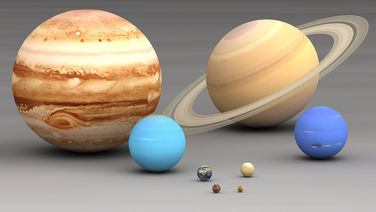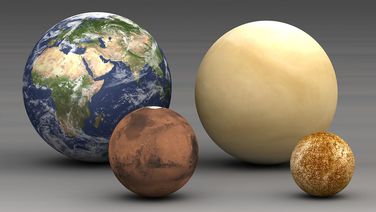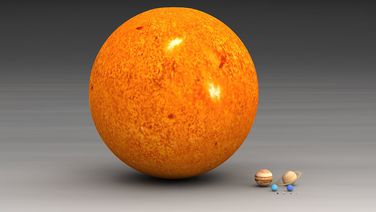The solar system is big.
You and I are tiny compared to even the smallest planet, but the planets are very small compared to the huge distances between them.
To help us understand these great expanses of space, it's convenient to use a measurement called the Astronomical Unit or AU for short. An AU is the average distance between the Earth and the sun—about 150 million kilometers (93 million miles).
With the AU we can begin to gauge the scale of the solar system. Pluto is about 40 AU from the sun.
Or think of it this way: If the Earth were the size of a basketball, the sun would be a 26-meter (85-foot) diameter sphere about three kilometers (two miles) away, and Pluto would be the size of a golf ball 110 kilometers (68 miles) away. Our solar system is a pretty big place.
Taking it one step further, the nearest star outside our solar system—Alpha Centauri—is 272,000 AU away, or about 760,000 kilometers (470,000 miles) away using our basketball scale.
When astronomers talk about the distance to the stars, however, they prefer to measure things in light-years. A light-year is the distance light travels in one Earth year, about 9.5 trillion kilometers (5.9 trillion miles) or about 63,000 AU.
Alpha Centauri is 4.3 light-years from Earth.


